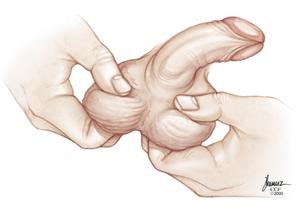Services for Testicular Cancer
2024/05/15
Self-examination
For any male presenting with a solid, firm mass within the testis, testicular cancer must considered as the primary diagnosis until proven otherwise.
Scrotal ultrasound
Using ultrasound to distinguish intrinsic from extrinsic testicular lesions with high degree of accuracy.
Computed tomography (CT scan)
A high-resolution CT scan of the abdomen and pelvis can assist with diagnosis.
Serum tumour markers
Evaluation of serum tumour markers alpha-fetoprotein (AFP), beta-hCG and lactate dehydrogenase (LDH) is often crucial as elevated levels of these markers are commonly associated with testicular cancer.
The choice of treatment modalities for testicular cancer is dependent on the stage of the disease and should be discussed with your doctor.
Potential interventions include:
Radical orchidectomy
A radical orchidectomy should be performed to permit histologic evaluation of the primary tumour and to provide local tumour control.
Chemotherapy
Chemotherapy is used in cases with high-risk features or evidence of spread.
Radiotherapy
High-dose X-ray is used for specific tumour types when there is evidence of spread.
After treatment of testicular cancer, patients are advised to perform regular testicular self-exams (refer to images below) and maintain close follow-up with their treating urologist.



Response to treatment is assessed after the initial induction cycle by repeat imagining studies and re-evaluation of tumors markers.




















